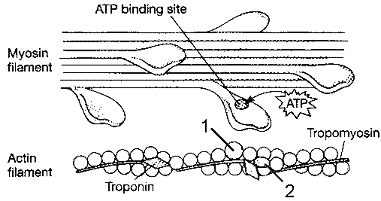Order the following statements to correctly describe the route of secreted protein as it is synthesized and secreted from a eukaryotic cell. _____
The protein folds and undergoes modification within the rough ER. _____
The protein travels within a membranous vesicle from the ER to the cis face of the Golgi apparatus. _____
Translation begins on a ribosome. _____
The protein travels toward the trans face of the Golgi, from which it is packaged into a secretory vesicle. _____
The secretory vesicle travels to and merges with the cell membrane, releasing its contents outside of the cell. _____
The ribosome attaches to the rough endoplasmic reticulum and the newly formed polypeptide is pushed into the lumen of the rough ER.
Fill in the blank(s) with the appropriate word(s).
3, 4, 1, 5, 6, 2
You might also like to view...
The derived sequence is
The following fragments of DNA correspond to a section of the genome. ACTGT GTGTT GACTC TTCAAC ACTGA TGAC A) C T C A G T C A A C T T G T G T C A B) T G A C A C A A G T T G A C T G A G C) A C T G T G T T C A A C T G A C T C D) A C T G T G T G T T G A C T C T T C A A C A C T G A T G A C
One reason that malaria continues to be the world's most significant infectious disease is because Plasmodium falciparum continues to develop resistance to the drugs that have been used to treat malaria. Which of the following is the contributing factor to its resistance?
A. The antimalarial drugs cause mutations to occur in the mosquito. B. Some Plasmodium falciparum have preexisting mutations that make them resistant to antimalarial drugs. C. Some mosquitoes have preexisting mutations that make them resistant to antimalarial drugs. D. The antimalarial drugs cause mutations to occur in Plasmodium falciparum. E. Some people have preexisting mutations that make them resistant to antimalarial drugs.
What event most directly precedes the activity illustrated in Figure 40-5?

a. depolarization
b. an action potential
c. acetylcholine release from a motor neuron
d. release of calcium from the sarcoplasmic reticulum
e. release of ADP from the myosin head
All of these are reported to cause deformities in amphibians except:a
pesticides. b. pollution. c. trematodes. d. atrazine. e. predators